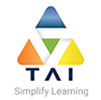R is more than just a computer program; it is a statistical programming environment and language used in Data Analysis, Data Science and Research of any business domain. R is becoming the de facto standard among professionals, and is used in every conceivable discipline from science and medicine to business and engineering. The Revolutionary Programming Language is very powerful and flexible. This training program delves into the language of R and make it accessible using simple data examples to explore its power and versatility. In learning how to “speak R”, you will unlock its potential and gain better insights into tackling even the most complex of Data Analysis Task.
About R and Machine Learning
Objective of the Course
The objective of this course will provide a basic introduction to R, and its use in organizing and exploring data. The emphasis is on understanding and working with fundamental R data structures and we will introduce some basic R programming techniques. Once you’ve completed this course you’ll be able to enter, save, retrieve, manipulate, and summarize data using R; you will also have the proper foundation to build your programming skills in R and take advantage of the full power of R.
Who should take this course?
This course is intended for those presently engaged in, or intending to undertake data analysis relating to research in any Business Area
Pre- Requisites
✓ Need to have the bend of learning attitude and should have analytical approach.
✓ Basic programming skill preferred but not mandatory.
✓ Any one of the Academic qualification: Must possess a Graduate, Post Graduate or Ph.D Degree in Statistics, Mathematics, Engineer(All), B.Com/M.Com, BBA/MBA, BCA/MCA, Life Sciences, Pharmacy, Bio Informatics, Bio Technology, MBBS/BDS & Working Professional
Course Content
Introduction to Machine Learning
- Getting R.
- Using Diff Packages
- Effective Use of Functions
Decision Trees
- Classification Trees
- Regression Trees
- TREE command in R
Decision Trees
- Interpretation of Tree Output
- Growing and Truncating the Tree
- Classification Confusion Matrix
Decision Trees
- Case Study
Bagging, Boosting and Random Forest
- Advanced Classification Tree modeling
- Concept of Resampling
- Why Bagging = Bootstrap Aggregating?
Bagging, Boosting and Random Forest
- Need for Bagging and Improvement upon Pruned Trees
- Random Forest – an Intuitive Approach
- How less can be more? Error reduction through limiting variables
- Scoring Variable Importance
Bagging, Boosting and Random Forest
- Boosting – the pinnacle of Ensemble models?
- Bias reduction (and variance reduction)
- Mboost package, its arguments and output
Bagging, Boosting and Random Forest
- Case Study
Factor Analysis and Principal Components
- Introduction to Unsupervised Learning
- Concepts of Dimensionality Reduction
- Why use Factor Analysis for Linear Regression models?
Factor Analysis and Principal Components
- Loadings, Euclidean Distances and Sales?
- Standardizing variables
Factor Analysis and Principal Components
- Proportion of Variance Explained (PVE)
Factor Analysis and Principal Components
- How many Principal Components to use?
- Scree Plots
- The Caret Package – uses and outcomes
Cluster Analysis and K Means Clustering
- Classification and Partitioning
- Euclidean and Mahalanobis Distances
- Hierarchical and non-hierarchical clustering
Cluster Analysis and K Means Clustering
- K-means clustering
- Hierarchical Agglomerative and Ward’s Method
- Reading Dendograms
Cluster Analysis and K Means Clustering
- Pvclust package
- Mclust package
- Plotting Cluster Solutions
- Validating Clusters
Cluster Analysis and K Means Clustering
- Case Study
Time Series Models (AR, MA, ARIMA)
- Uniqueness of Time Series Data
- Data management in R for Time Series
- Return of Autocorrelation!
Time Series Models (AR, MA, ARIMA)
- Concepts of Stationarity, Unit Roots and Cointegration
- Seasonality in Times Series Data
- Library ts and xts in R
- Autoregressive Models (AR)
- Moving Average Models (MA)
Time Series Models (AR, MA, ARIMA)
- Autoregressive Integrated Moving Average (ARIMA) models
- Analysis of Autocorrelations and Partial Autocorrelations
- Parameters Estimation for ARIMA
- Diagnostic Checking
Time Series Models (AR, MA, ARIMA)
- Applied Example with a Case Study
Market Basket Analysis
- Introduction to Rapidminer
- Data Management for Affinity Analysis in Rapidminer
- Introduction to Association Rules
- Arules package in R
Market Basket Analysis
- Metrics of Affinity
- Support,
- Confidence
- Lift
Market Basket Analysis
- Affinity Analysis using Rapid Miner
- Interpreting results of Affinity Analysis
Market Basket Analysis
- Applied Example with a Case Study
Call Now- +91-921-276-0556


